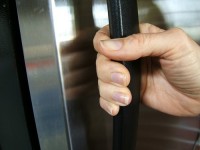Handling food in hot weather
 Food safety can be temperamental at the best of times, but ensuring you’re handling food correctly and keeping it bacteria-free is even more troublesome in the warmer months.
Food safety can be temperamental at the best of times, but ensuring you’re handling food correctly and keeping it bacteria-free is even more troublesome in the warmer months.
With summer starting next week, there’s never been a better time to remind yourself of some simple food handling tips to ensure your food doesn’t become tainted or dangerous to eat.
Get fridge and freezer temperatures under control
During summer, you’ll want to keep things nicely chilled. Most foods last longer in the fridge or freezer, especially meat. For the sake of keeping meat up to the noted ‘use by’ date, your fridge should be set no higher than 5 °C and your freezer somewhere between -15 to -18 °C.
If possible, keep meat in the cooler/crisper of your fridge, and the same goes for salads and/or vegetables. Only place in the fridge what you intend to cook or use in the coming days. If you’ve bought meat to use over a period of months, then throw them immediately into the freezer when you get home.
Don’t waste time getting food home
When you’re purchasing food products like meat or drink products like milk, you can’t waste time in getting them home. They’re kept chilled at the stores for a reason – sitting out in the heat will cause them to spoil and form bacteria. Purchase meat and dairy products at the end of your shop and head straight home from there. If you have a cooler bag, place them in there to keep them cooler for longer. Once home, place them in the fridge or freezer.
Keep hot food hot
Just like you should keep cold food cold, you need to ensure you don’t allow hot food (e.g cooked meat) to fall to room temperature. It should be kept at 60 °C or higher. If you’re done with your food and want to cool it down, place it in the fridge. If you leave it out to ‘cool’ to room temperature, then it runs the risk of forming bacteria. Lower temperatures, however, such as those of a fridge or freezer, keep bacteria at bay.
When reheating food, it needs to be heated to 75 °C or higher. You’ll usually be able to tell as it’ll start steaming or boiling.
Don’t mix cooked and raw food
This rule applies all year round, but best practice is to keep your raw meats towards the bottom of the fridge and well-sealed. The risk of having them sitting towards the top is that any slight cut in the plastic could allow blood from the raw meat to drip on food below, including cooked meat, leading to bacterial growth.
Similarly, when preparing food, make sure you cut raw meat on a different cutting board from where you cut up your vegetables. The simple rule is keep raw meat away from all other food as it can create a serious health risk.
Make sure your fridge can breathe
During summer, your fridge will already be working a bit harder to maintain cool temperatures. So if you start shoving so much food and drinks into the fridge that air doesn’t have a chance to properly circulate, then you’ll find it simply can’t keep a constant, cool temperature. While, yes, you can lower the temperature further, this only makes things more taxing on the fridge and that will show in your next electricity bill.
Take some time to make sure that there’s still plenty of room for air to circulate, keep items that need be kept the coolest down the bottom, and always check that no items are pressing against the actual components that keep the cool air moving through the fridge.